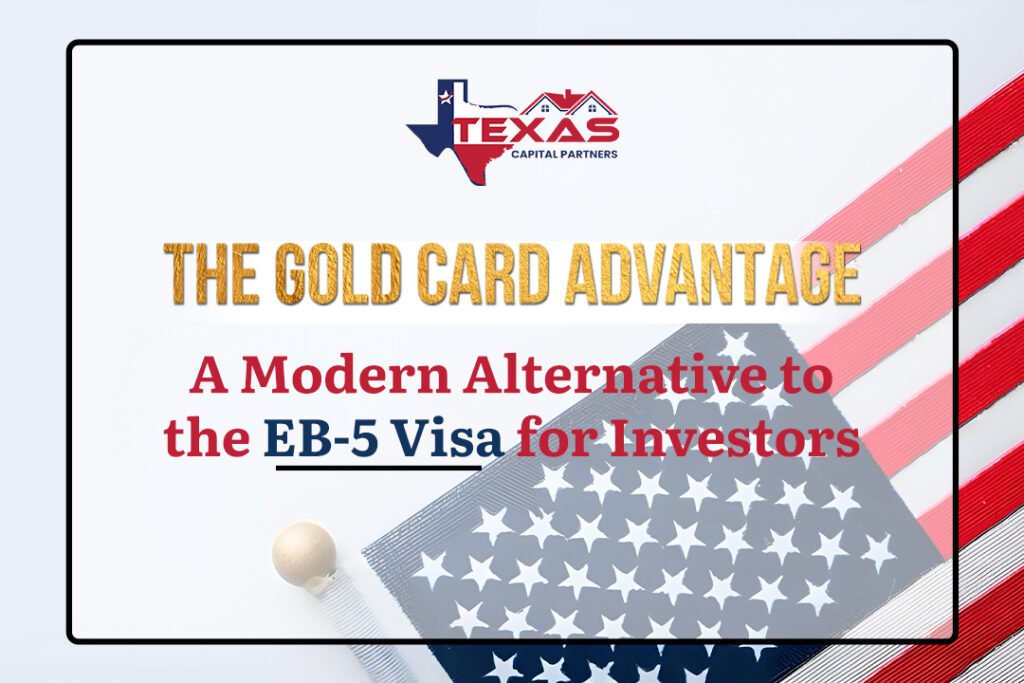For decades, the EB-5 Visa program has been a favored route for investors seeking U.S. residency through investment. However, with increasing processing times, high capital requirements, and evolving regulations, many investors are looking for more flexible alternatives. One such alternative that has been gaining traction is the Gold Card program, which provides a modern, efficient, and investor-friendly residency pathway in various countries.
In this blog, we explore the advantages of the Gold Card and why it is emerging as a superior alternative to the EB-5 Visa.
Challenges of the EB-5 Visa Program
The EB-5 Visa requires investors to commit a minimum of $800,000 in a Targeted Employment Area (TEA) or $1,050,000 in other locations. Additionally, investors must create at least ten full-time jobs for U.S. workers. While the EB-5 offers a path to U.S. permanent residency, it comes with several challenges:
- Extended Processing Times – Due to high demand and regulatory backlogs, approvals can take years.
- Significant Capital Investment – Investors must place their funds at risk, often with no guaranteed returns.
- Job Creation Requirement – Ensuring the investment leads to ten U.S. jobs adds complexity and financial pressure.
- Regulatory Uncertainty – Policy shifts and legal changes may impact investor eligibility and success rates.
The Gold Card: A Modern and Flexible Alternative
The Gold Card is a residency-by-investment program available in countries like Taiwan, Singapore, and the UAE. It provides a faster, more affordable, and flexible option for investors looking to gain residency in a business-friendly environment.
Key Benefits of the Gold Card Program:
- Rapid Processing – Unlike the EB-5 Visa, which can take years, Gold Card residency approvals are often completed within months.
- Lower Investment Thresholds – Many Gold Card programs do not require a direct financial investment, instead focusing on professional expertise, business contributions, or real estate purchases.
- No Job Creation Requirement – Investors do not need to meet strict job creation mandates, simplifying the process.
- Tax Advantages – Certain Gold Card jurisdictions offer tax incentives to foreign investors.
- Enhanced Business and Travel Opportunities – Gold Card holders often receive residency privileges, work authorization, and even pathways to citizenship.
Comparing the EB-5 Visa and Gold Card
| Feature | EB-5 Visa (USA) | Gold Card (Various Countries) |
|---|---|---|
| Investment Required | $800,000 – $1,050,000 | Varies (often lower or none) |
| Processing Time | Several years | A few months |
| Job Creation Requirement | Yes (10 jobs) | No |
| Residency | Permanent Green Card | Renewable long-term visa |
| Pathway to Citizenship | Yes, after 5 years | Depends on country |
| Tax Benefits | Limited | Often favorable |
Why Investors Are Choosing the Gold Card
The Gold Card is becoming the preferred choice for investors due to its:
- Flexibility – No rigid job creation or at-risk investment requirements.
- Speed – Faster processing times compared to the EB-5 Visa.
- Global Mobility – Access to international markets and business-friendly policies.
- Lower Financial Risk – No need for high-risk investments in government-approved projects.
Conclusion
The Gold Card program presents a modern, efficient, and less restrictive alternative to the EB-5 Visa for global investors. It offers faster processing, lower investment risks, and greater flexibility, making it an attractive option for those seeking residency through investment.
If you’re interested in exploring the Gold Card advantage and finding the best residency solution for your needs, Texas Capital Partners is here to guide you through every step.



